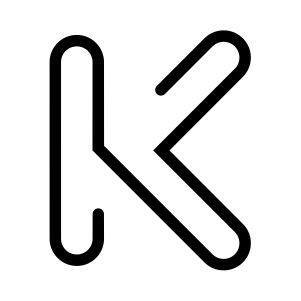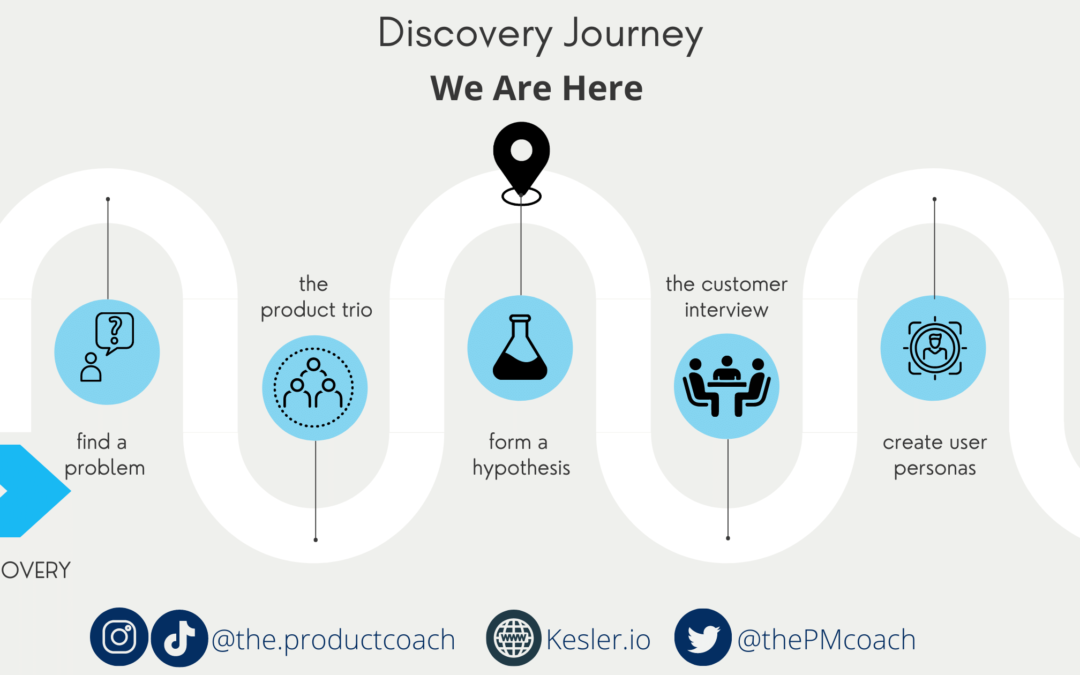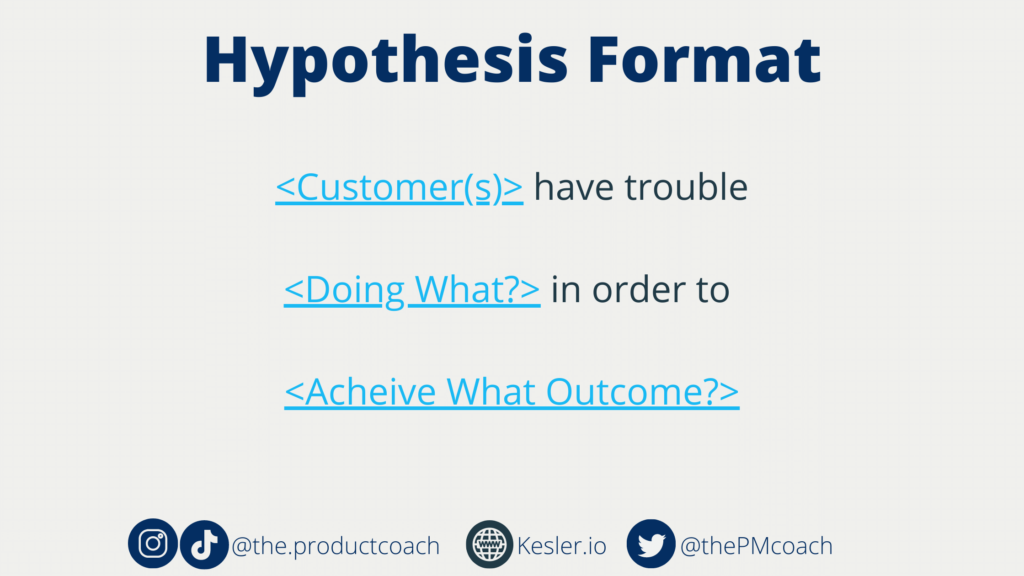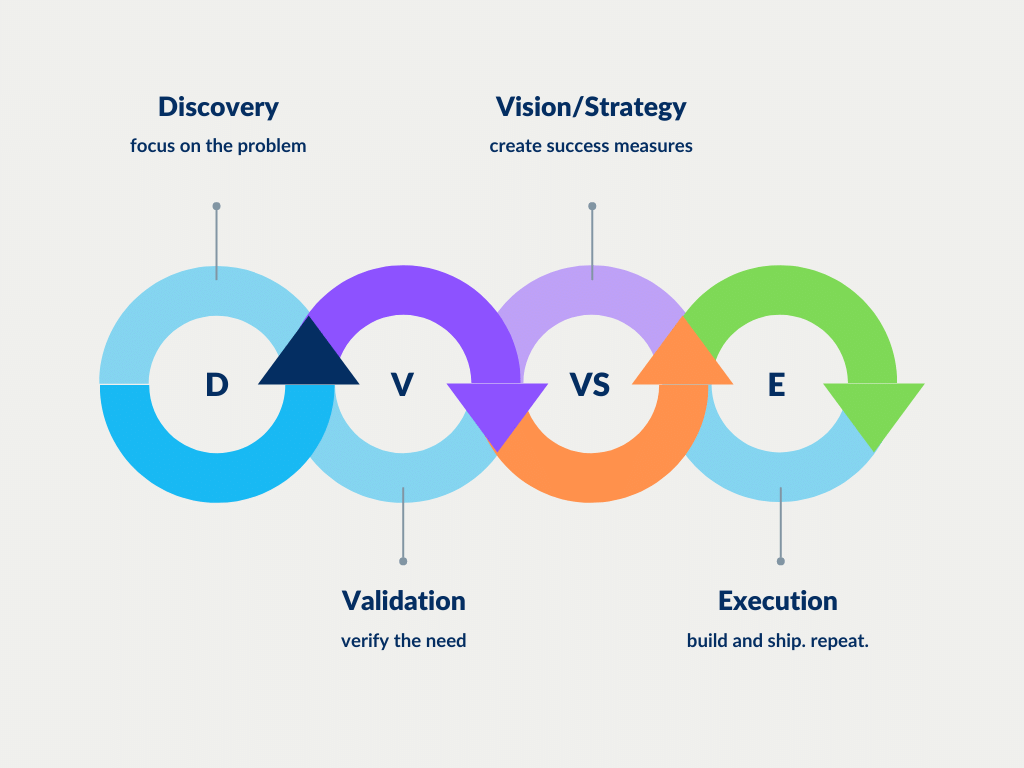When is the right time to form a hypothesis?
At this point we’ve discovered some problems and broken into our product trios. The next step is for us to form a hypothesis about what we want to further discover. Now, a lot of people would call this a vision. I don’t consider it a vision since we don’t yet know how we will make the world a better place with the solution we create. What we do have though, are some problems we need to dive deeper into. This gives us some sense of direction to move forward.
Product management and the Scientific Method

The scientific method is another tool in the product managers tool kit. It’s what I use when I have a collection of problems and pain points that need to be fleshed out further. I’m not saying we have to have a fully fleshed out hypothesis (or hypotheses), we’ll iterate on it as we collect more information from customers. We just need a baseline to move forward with and try to suss out.
As you can see on the map below we have “form a hypothesis” directly before we go into the customer interviews. The formation of a hypothesis and the customer interviews are so closely related. Really, the hypothesis is more like the pit stop right before you head to the customer interviews. If we think about a scientist in a lab, the scientist will observe a problem, do a little research into that problem, and then come up with a hypothesis and experiments to validate it.
In this case the experiment is the customer interviews.
Form a series of hypotheses to test at the same time.
When I was starting my own business a few years ago, I started with interviewing folks at landscaping companies. They were elated to share their problems with me and talked at length about all the different issues they had. One company mentioned they had issues with routing their large team, another had issues with scheduling, yet another had issues with tracking requested services at specific times of the year, and many others. So, with these problems in mind, I formed small hypotheses around each to have a general path forward.
Here are some examples:
- Landscaping companies have trouble scheduling their teams after they grow to a certain size.
- Landscaping companies have trouble figuring out the most efficient (fuel/time) routes for their drivers to maximize the number of lawns they can get to in one day.
- Landscaping companies have issues tracking what their customers want and when.
After I formulated these hypotheses, I would head right into customer interviews and ask questions to validate them. Sometimes I would get a bunch of “no we don’t have that problem”. I would note that along with the size of the business, the service area, and how many employees they had. Then I’d move on to the next hypothesis. More on the actual interview questions and tactics in my next post coming next week. (Subscribe to my newsletter to be notified as soon as it’s out!).
Some hypotheses can be ruled out almost immediately if we find that only one potential customer has that problem, but we’ll begin to rule out even more and determine the business viability of them when we have enough information to group customers into personas (the post after next).
Conclusion
Creating a hypothesis before we head into the customer interviews is crucial. We need to have some sense of direction before we fully interview a customer and begin to collect all the information about potential problems we can solve. After a few interviews, we’ll start to map out our collection of pain points and personas and begin to map hypotheses to personas. We’ll then have more information to iterate on our hypotheses before we go forward into validation, ideation and experimentation.





Recent Comments